Curious how social proof can boost your marketing? You’ve come to the right place.
Social proof is the backbone of any sales funnel and marketing strategy. It eases buyers into exploring your brand, helps alleviate any initial resistance, and builds community-led trust.
For this article, we compiled 11 of the most influential social proof examples that demonstrate effective ways to increase credibility and trust through real-life endorsements from customers, experts, and influencers.
Let’s take a glance at them, shall we?
Key Highlights on Social Proof Examples
- Social proof enhances brand trust through visible endorsements, reducing customer hesitation and boosting conversions.
- Types of social proof include user reviews, expert endorsements, celebrity testimonials, and user-generated content (UGC), each adding credibility.
- Real-time notifications create urgency, tapping into FOMO and encouraging quick engagement.
- Social media shares and followers reflect brand popularity, enhancing visibility and interest.
- Referral programs incentivize customer advocacy, increasing retention and expanding reach.
- Before-and-after demonstrations visually highlight product impact, motivating new users with real-world examples.
Understanding Social Proof
Before we get into the list of social proof examples, let’s lay a little bit of groundwork.
Social proof is all about nurturing people’s perception of a brand’s offer. People often modify their behavior based on others’ actions. Originated by psychologist Robert Cialdini, the term alludes to the idea that individuals heavily weigh the actions and opinions of others, especially in situations of uncertainty, to guide their own choices.
This psychological phenomenon spurred the idea that marketing strategies featuring real customer testimonials can significantly reduce buyer hesitationwhen considering a product or service.
Social Proof Creates FOMO
When potential customers see others engaging with a product, they are more likely to follow suit to avoid missing out on something valuable (i.e. FOMO or “Fear of Missing Out” ). This is particularly evident in online shopping, where reviews, ratings, and customer testimonials play a critical role in decision-making.
A Lot of Social Proof Isn’t Necessarily a Good Thing
Genuine, external sources lend effectiveness to social proof. However, overloading your marketing with social proof can backfire if applied in the wrong way. An overabundance of social proof (especially if the comments and reviews are very brief and sound similar) can make it seem insincere or even mass-fabricated.
Therefore, striking the right balance is crucial to maintaining credibility and trustworthiness with your audience. Highlight several of the best customer reviews and avoid oversharing redundant bits of positive feedback you’ve received.
Cyclical Social Proof
Social proof behaves as a shortcut for decision-making. In turn, it creates a cascading effect that leads more of your customers to contribute new, edifying feedback.
If your brand showcases the positive experiences of others, it can build on that momentum and attract new customers effectively. From there, it can generate more social proof, leading to even more customer growth, and the cycle repeats itself in this way continuously.
Now that we’ve covered a bit of the basics, let’s jump into our examples of social proof.
1) User Reviews and Testimonials
Among the most potent forms of user social proof are reviews and testimonials. Nearly 95% of customers read reviews before making a purchase, nodding to their critical role in the decision-making process. Positive reviews build trust and can even make customers willing to pay more for a product or service.
To gather compelling testimonials, start by reaching out to past buyers individually. Request detailed feedback that includes their full names, cities, and a professional headshot. Once received, style these testimonials in a visually distinct format that immediately captures the attention of potential customers.
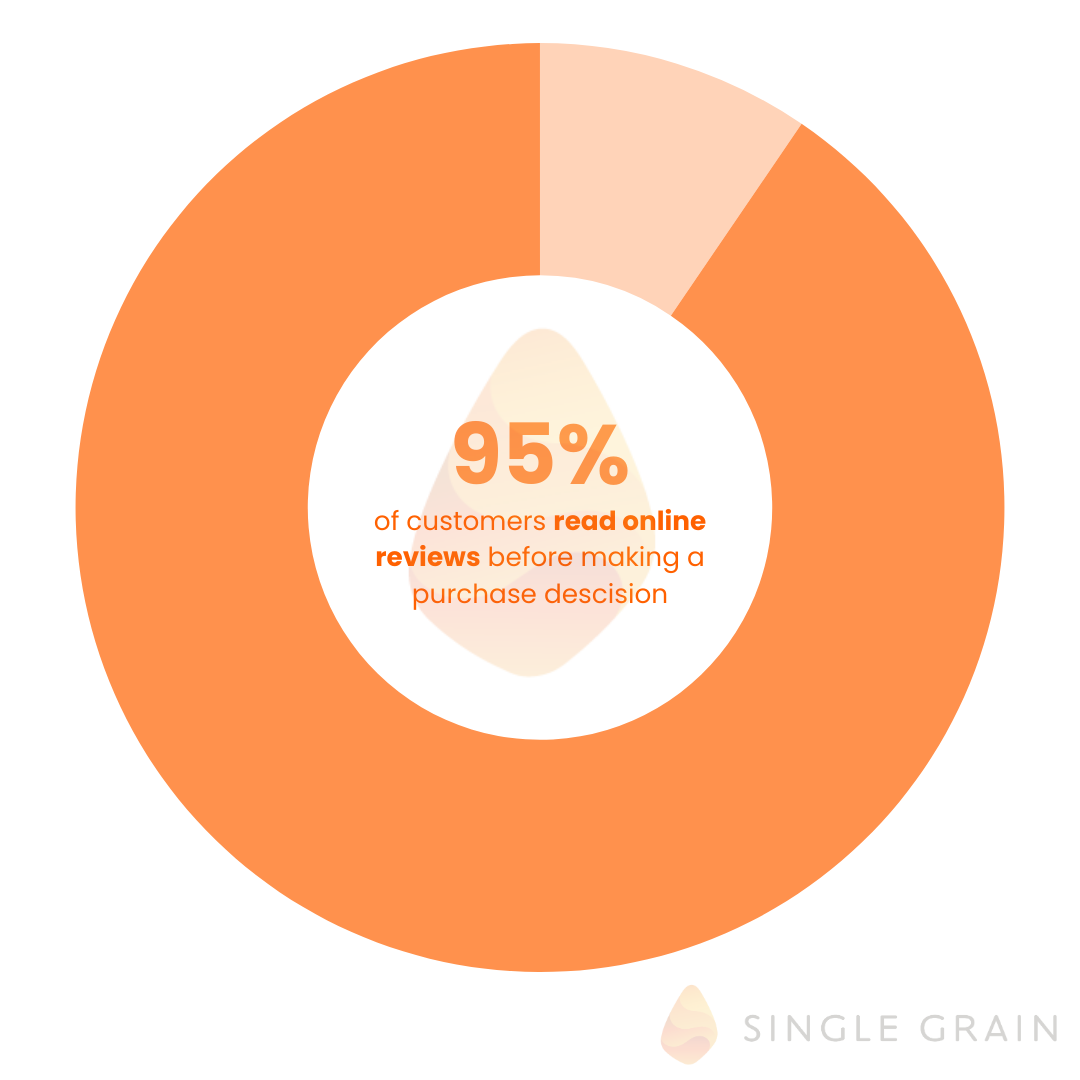
Remember to monitor all feedback—addressing any negative reviews constructively and encouraging repeat customer input will enhance authenticity and build continued trust.
Strategically placing testimonials across your website can enhance their impact. Whether featured on the home page, product pages, or a dedicated landing page, testimonials from actual customers add authenticity and credibility to your brand.
Including photos and videos of satisfied customers alongside their testimonials can further humanize your brand and support the product’s effectiveness.
Another successful strategy is to share testimonials on social media platforms. Brands like Branch have successfully boosted their reputation by promoting testimonials through social media posts.
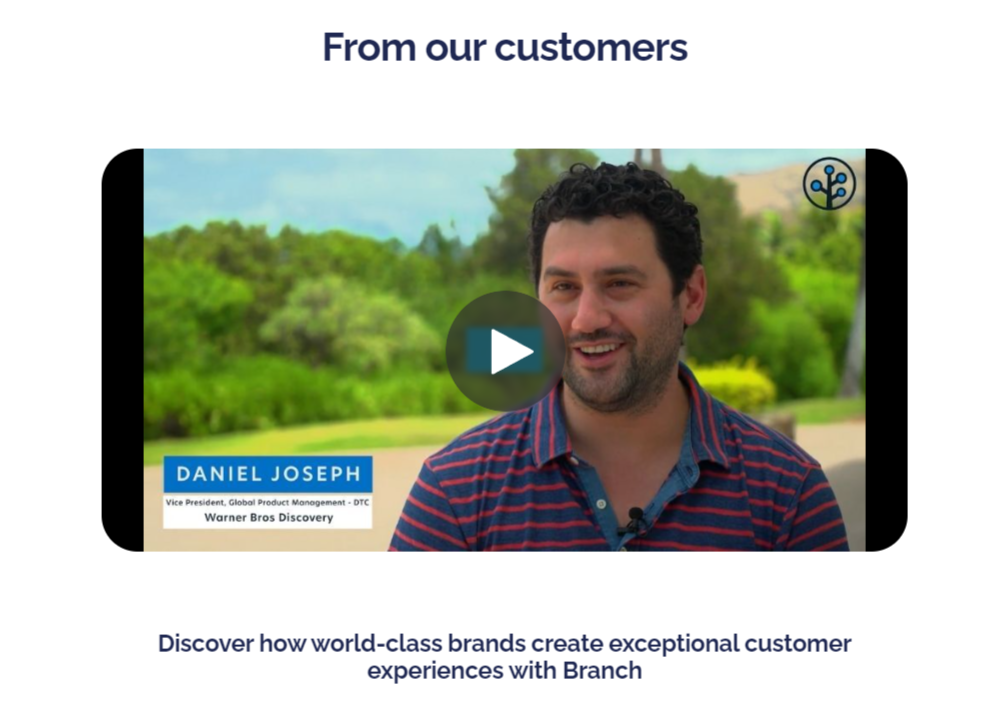
(Image Source: Branch.io)
Additionally, harnessing review sites such as Trustpilot, Google, and Yelp can provide valuable social proof from actual users who have experienced your product or service.
Reviews are also a great keyword strategy: they are a ranking signal for Google and can boost keyword presence on your pages.
For product-specific pages, ensure you proactively prompt past buyers to submit reviews so that the section never turns into a “ghost town”—this will help maintain a lively and trustworthy display of user opinions.
Consider using platforms such as Shopper Approved to integrate reviews seamlessly; if citing results from examples like PETCO’s experience, please verify that all statistics are current or flagged for update.
Key Takeaway:
Media Coverage as Social Proof
There are certain media outlets that consumers trust without question, so any brand mentions in these types of publications can do a lot to help your business’s reputation.
Any mention of your brand in external sources shows potential customers that your business is well-known and recognized by trustworthy news sources, giving you lots of credibility.
For example, Ritual Vitamins includes links to articles from trusted sources like The New York Times, Forbes, and Health Magazine right on their homepage to show that their name is endorsed by these major brands.
They even include direct quotes from these articles to show customers just what the media has to say about them:

2) Expert Endorsements
Endorsements from industry experts serve as another powerful form of social proof. These endorsements leverage the credibility and expertise of professionals to bolster the reputation of your product or service.
For example, dental experts endorsing a brand like GetQuip can significantly enhance its credibility among potential users.

(Image Source: Social Champ)
The impact of expert endorsements is magnified when the product is directly relevant to the expert’s field. This type of endorsement typically indicates that the endorsement is genuine and informed rather than a mere marketing tactic. Leveraging the reputation of these experts can improve brand recognition, increase customer loyalty, and drive sales.
Key Takeaway:
3) Celebrity Social Proof
The fame and personal brand of celebrities, when leveraged through celebrity endorsement, can amplify the credibility and reach of your brand. For instance, Kourtney Kardashian’s role as a brand ambassador for Manuka Doctor significantly boosted the brand’s reputation, especially following her mention in a popular TV show.

(Image Source: The New Zealand Herald)
These endorsements can create a buzz that resonates with broader audiences. Dunkin’s collaboration with Ice Spice and Ben Affleck for the Munchkins® campaign is a prime example, resulting in content that captivated and engaged a diverse customer base.

When your audience sees celebrities they care about advocating for a product or service, it can help them shed a layer of hesitancy. For that reason, you should evaluate the merit in partnering with one or more celebrities that align with your brand’s goals and is valued among your audience.
Key Takeaway:
4) Influencer Marketing
Influencer marketing, a contemporary take on traditional endorsements, capitalizes on the trust and admiration influencers have fostered among their followers. This strategy leverages social proof by utilizing the authenticity and relatability of influencers, making their endorsements highly effective.
For example, Gymshark’s use of brand ambassadors to promote special offers and showcase products authentically has driven significant sales.

(Image Source: Instagram, analiscruzx)
Influencer campaigns like Dove’s #PassTheCrown have also demonstrated the power of this approach, earning over 1 billion impressions and significantly increasing engagement rates.
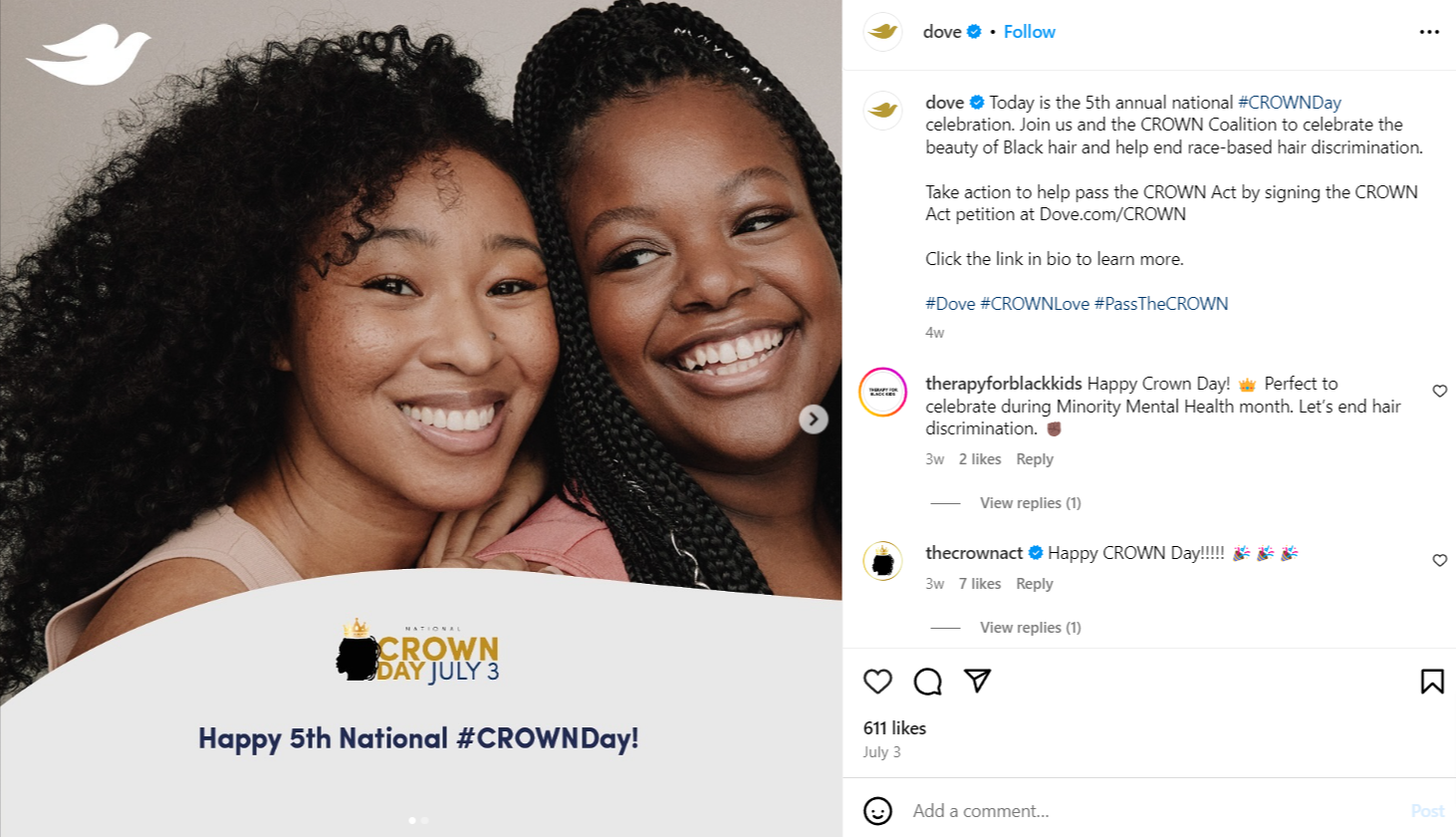
(Image Source: Instagram, Dove)
By partnering with influencers, brands can:
- Reach their target audiences more effectively
- Build trust through authentic and relatable content
- Enhance engagement and brand visibility through giveaways and contests.
Key Takeaway:
5) User-Generated Content (UGC)
Showcasing real-life usage and authentic customer endorsements, user-generated content (UGC) is a treasure trove for social proof. This type of content includes:
- Text
- Videos
- Images
- Reviews
These are created and shared by users rather than the brand itself. Brands like Frank Body have successfully harnessed UGC by encouraging customers to use specific hashtags, leading to widespread sharing of their products.
Similarly, GoPro sustains its YouTube channel with top videos filmed by customers as part of its Anything Awesome Challenge, showing off the real-life applications of its products.
Here’s a social proof example of Nathan Florence’s UGC content for GoPro:

(Image Source: YouTube, GoPro)
To maximize the impact of UGC, it’s essential to give clear credit to the original creators by tagging them in posts. Instagram, as the most popular social media platform, is particularly effective for showcasing UGC and engaging with a broader audience.
Key Takeaway:
6) Certifications and Awards
Trust and credibility can be showcased by certifications and awards from authoritative sources. Displaying these accolades on your website or social media platforms can demonstrate that your product or service meets industry standards and has been recognized for excellence.

For instance, showcasing ISO compliance, food safety certificates, or prestigious culinary awards can significantly boost your brand’s reputation.

These credentials not only build trust with prospects, but also differentiate your brand from competitors.
Key Takeaway:
7) Real-Time Activity Notifications
A sense of urgency and social proof can be created through real-time activity notifications, such as recent purchases or sign-ups. These notifications can boost sales as they tap into FOMO. Integrating real-time notifications on your website can be done using third-party tools like the Elfsight Popup widget.
Effective notifications often include calls to action, such as ‘Shop Now’ or ‘Learn More,’ encouraging immediate engagement.
You can try out the widget creator yourself here.
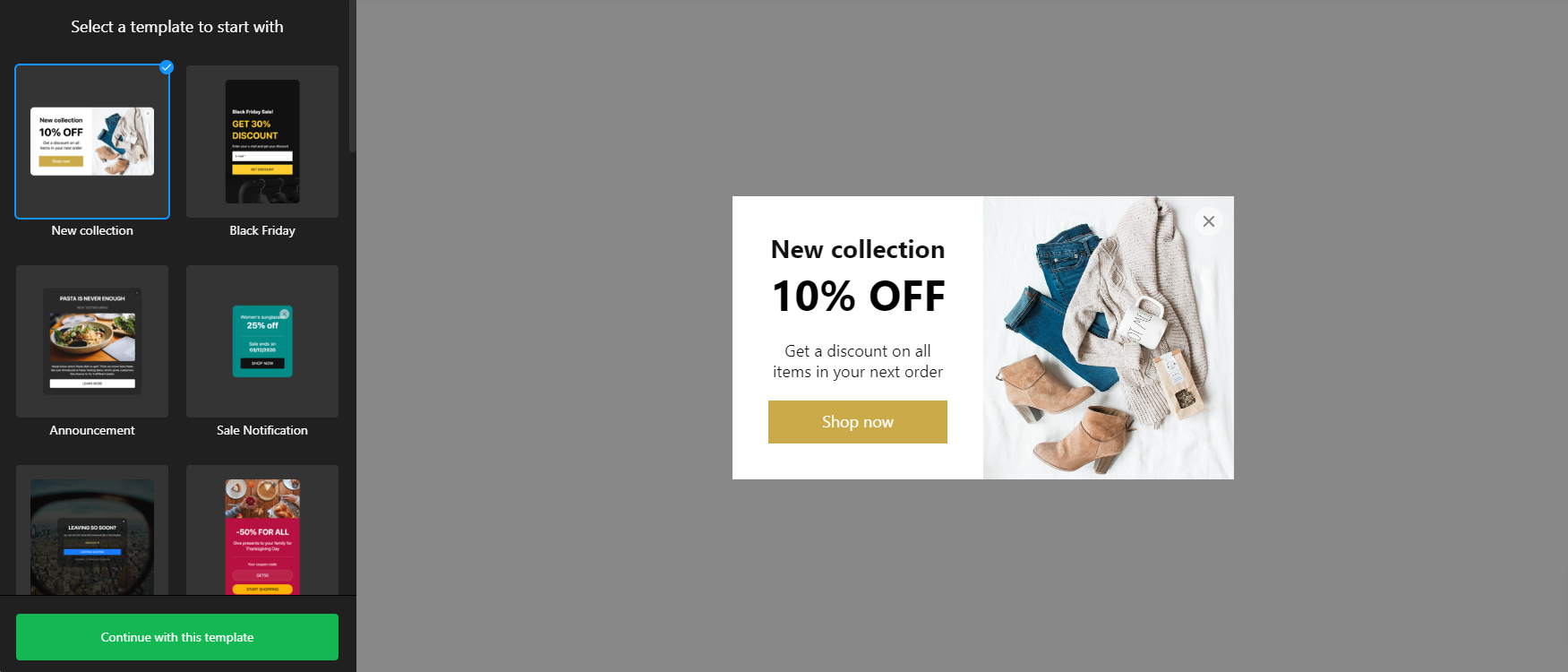
By displaying recent activity, such as live purchases or limited stock availability, you can influence potential customers’ decisions and validate the popularity of your product or service.
Key Takeaway:
8) Social Media Followers and Shares
A brand’s popularity and credibility can be visibly indicated by followers and shares on social media. High engagement on social media platforms signifies widespread interest, enhancing overall brand awareness.

(Image Source: Instagram, Scrub Daddy)
Leveraging social media platforms can help businesses in the following ways:
- Understand prospective customer needs and preferences
- Inform more customer-centric strategies
- Stay updated on products and services
- Maintain an active and engaging presence
With 68% of consumers following brands on social media to stay updated on products and services, maintaining an active and engaging presence is a crucial component of building your brand’s social proof.
Key Takeaway:
9) Customer Base and Numbers
Credibility and trust can be significantly enhanced by demonstrating a large customer base, including existing customers, or notable clients, which appeals to your target audience. Displaying the number of users, customers, or subscribers compared to competitors builds trust through the ‘wisdom of the crowds’.
Brands like Wufoo and Slack effectively highlight their customer base by showcasing renowned brands on their home pages, attracting attention and building trust. This type of social proof example indicates that your product or service is valuable and reliable, encouraging new sign-ups and participation.
Here’s a quick glance at the way we at Single Grain lay out the brands we’ve worked with on our home page:
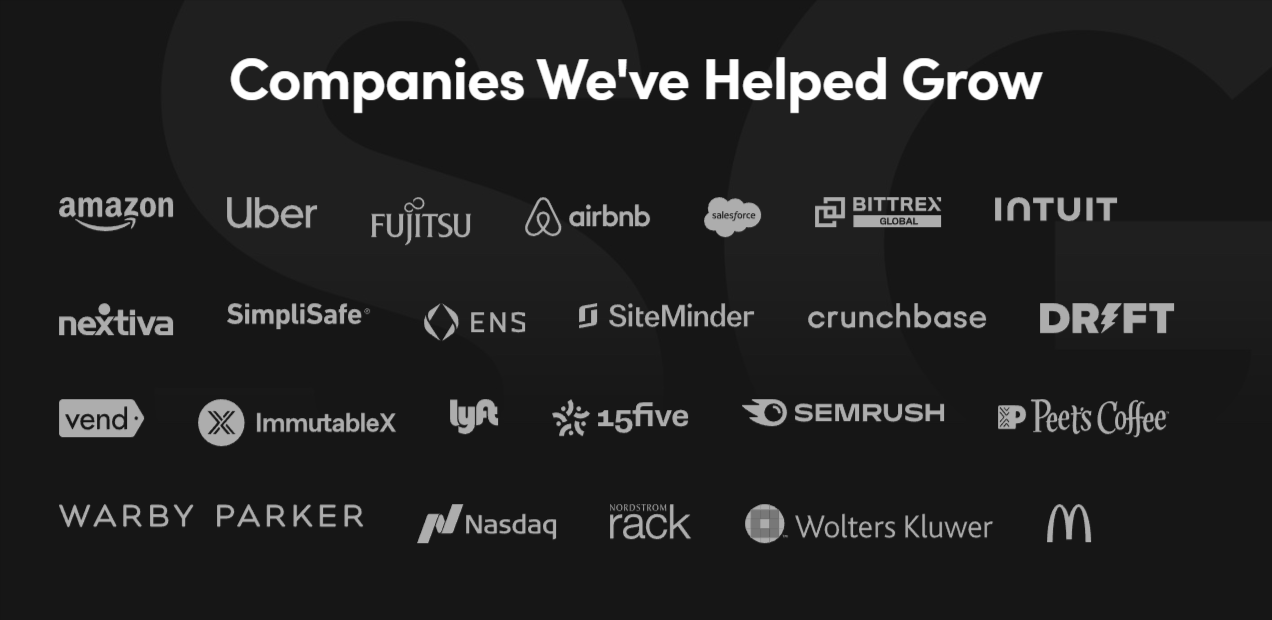
Key Takeaway:
10) Referral Programs
One of the most effective social proof examples we can mention is referrals. Referrals increased customer retention can be achieved through referral programs that incentivize customers to refer others, leading to happy customers. Referred customers have a 37% higher retention rate and a 16% higher lifetime value compared to non-referred customers.
Successful referral programs create a win-win scenario by offering rewards like discounts or perks to both the referrer and the referee.
Airbnb’s referral program is a great example of how effective these initiatives can be. The program encourages existing users to refer new guests and hosts by offering them rewards.
When a referred friend signs up using the referral link, they receive a discount on their first booking or hosting experience, while the person who referred them earns travel credits or cash rewards once the new user completes a qualifying activity. This strategy leverages social proof, as people are more likely to trust and try a service recommended by friends or family.
Key Takeaway:
11) Before-and-After Demonstrations
Tangible evidence of a product’s or service’s transformative power can be compellingly provided through before-and-after demonstrations.
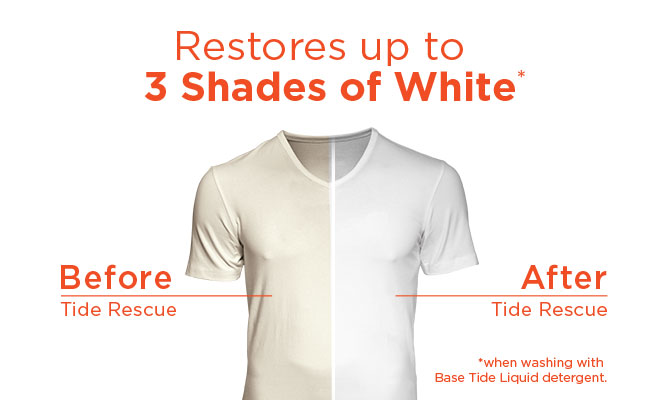
(Image Source: Tide)
These visual comparisons effectively highlight the potential benefits and motivate individuals to engage with the product or service.
Industries such as beauty, home improvement, and weight loss frequently use before-and-after photos to showcase dramatic transformations.
A great example of this is dental practices highlighting the success of cosmetic procedures like teeth whitening through these visual demonstrations. These practical examples serve as powerful social proof, illustrating real-world outcomes and enhancing credibility.
Key Takeaway:
Implementation Tips for Social Proof
To effectively integrate social proof into your marketing strategy, start by encouraging your customers to share their brand experiences on social media. Prompt them to tag your brand or use a dedicated hashtag, which makes tracking and showcasing their testimonials seamless.
Additionally, include subtle calls to action for social shares at the end of blog posts and email communications, and consistently monitor both positive and negative brand mentions. This balanced approach amplifies authentic feedback and ensures a responsive, trustworthy brand presence.
Last Words on These Social Proof Examples
In summary, leveraging various forms of social proof can significantly elevate your marketing strategy. From user reviews and expert endorsements to influencer marketing and real-time activity notifications, each method offers unique benefits that build trust, enhance credibility, and drive conversions.
The key is to use these social proof strategies authentically and effectively, ensuring they resonate with your target audience. If you incorporate these approaches to social proof into your marketing efforts, you can create a more trustworthy and appealing brand.
Remember, the influence of social proof is immense, and when used correctly, it can transform your audience’s perception of your business for the better.
Good luck!
If you’re ready to start making the most of your social proof, Single Grain’s marketing experts can help!👇
Recommended Video
For more insights and lessons about marketing, check out our Marketing School podcast on YouTube.
Frequently Asked Questions
-
What is social proof and why is it important?
Social proof is important because it builds trust and reduces uncertainty for potential customers, ultimately encouraging them to make purchases. So, it’s a crucial part of marketing.
-
How can user reviews and testimonials impact my business?
User reviews and testimonials can significantly impact your business by building trust and credibility, influencing purchasing decisions for potential customers.
-
What are the benefits of influencer marketing?
Influencer marketing leverages the trust and admiration influencers have with their followers, creating authentic and trustworthy endorsements, which can significantly boost brand visibility, engagement, and sales.
-
How do real-time activity notifications work as social proof?
Real-time activity notifications work as social proof by creating urgency and validating the popularity of a product, motivating potential customers to take immediate action.
-
Why should I use before-and-after demonstrations in my marketing?
You should use before-and-after demonstrations in your marketing to provide tangible evidence of a product’s effectiveness, showcasing real-life transformations and serving as powerful social proof that can motivate potential customers to make a purchase. These demonstrations offer clear evidence for potential customers to see the impact of your product.






